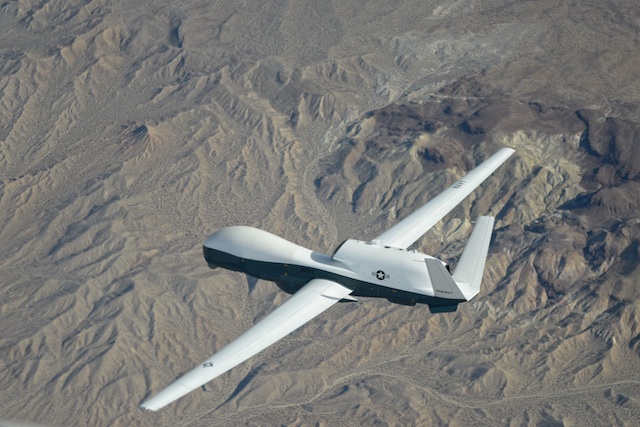The US Navy and Northrop Grumman have completed initial envelope expansion testing of the company’s MQ-4C Triton unmanned aircraft, clearing it to fly at various altitudes, speeds and weights.
During the tests, conducted from Northrop’s facility in Palmdale, California, the aircraft completed 13 flights, logged 81h in the air and reached an altitude of just over 59,900ft (18,260m), says the company.
Triton first flew in May 2013 and the navy is “now working to fly” the second test aircraft, says the service in a company-issued release.
Both aircraft will be moved to NAS Patuxent River in Maryland, where technicians will install sensors and continue flight tests. The USN had intended to acquire 68 Tritons, but the service’s most recent budget proposal calls for 60 aircraft.

Northrop Grumman
The service now intends to acquire 16 aircraft by fiscal year 2019 and the remaining 44 in later years.
Triton is a maritime intelligence, surveillance and reconnaissance aircraft based on Northrop’s Global Hawk. The type will act as an “adjunct” to the USN’s fleet of new Boeing P-8 Poseidon maritime reconnaissance aircraft.
Tritons have a “self-deploy” range of 8,200nm (15,200km) and can fly missions with a radius of more than 2,000nm, says Northrop. The aircraft can reach an altitude of 56,500ft, fly at a maximum speed of 331kt (613km/h) and remain airborne for 24h, it adds.
The Triton will be equipped with maritime radar, electro-optical/infrared sensors and electronic support measures, says the navy.
The USN intends to complete initial operational test and evaluation work in 2017 and reach early operational capability the same year, Northrop says.
Source: FlightGlobal.com























